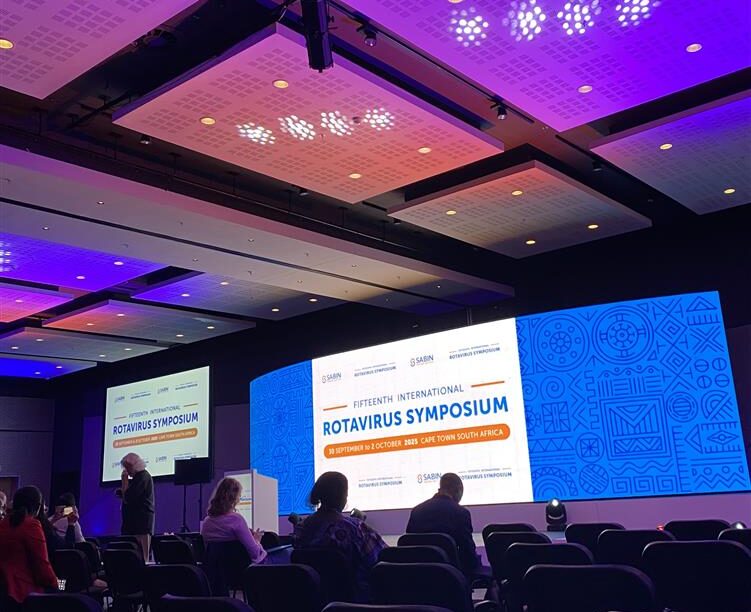
Time to evolve our thinking about breastfeeding
 Mother Mavis Phiri & baby Brenda Phiri, at Chainda Clinic in Lusaka, Zambia
Mother Mavis Phiri & baby Brenda Phiri, at Chainda Clinic in Lusaka, Zambia
Mavis Phiri breastfeeds her baby, Brenda, at Chainda Clinic in Lusaka, Zambia. Photo: PATH/Gareth Bentley.
We’ve developed some remarkable innovations over the years to protect ourselves against infectious diseases. But despite our accomplishments in developing technologies like vaccines and medicines, science has not yet been able to duplicate one of our most ancient tools: breastmilk. Odes should be written about its role in shaping human history. Some researchers believe its protective properties helped facilitate the ability of humans to hunker down in extended stays in close proximity, eventually leaving nomadic life behind. Just think: your favorite city was built on breastmilk (and also the wheel and perhaps a few other breakthroughs).
Although we can’t replicate it, we do understand in great scientific detail why breastfeeding is one of the best ways to protect newborns from infectious diseases like diarrhea. So important is this protective function that studies of breastmilk across mammalian species indicate that its immunological properties are older than its nutrient profile. And yet, less than half of babies born today receive this vital protection.
To understand the barriers to widespread adoption of breastfeeding and ways to overcome them, it helps to step back and explore how and why this system evolved the way it did.
For mothers, an outdated operating system
While messages about breastfeeding most commonly focus on its benefits to the newborn, the physiology of breastfeeding was shaped by a dynamic balancing act between what’s best for the newborn as well as the mother; systems evolve based on what is beneficial to the species. Unfortunately, evolution is slow, and some maternal advantages to our breastfeeding biology still assume a hunter/gatherer way of life.
The norm in those societies was a life of constant motion, and this pretty much stayed the same after a woman became a new mother, except that she then foraged all day with an infant strapped to her chest. After all, she still had to find her own food.
It’s within this context that human breastmilk evolved to be more diluted (less nutrient-dense) than those of other mammals. The reason: lactation is hard work, costing even more calories than pregnancy. In walking long distances, our ancestors were short on energy, but long on time with their newborns. Several small calorie expenditures stretched over many hours allowed our foraging foremothers to maintain endurance while still providing the baby’s nutritional needs.
I don’t need to tell you frequent feedings could not be more mismatched to modern day “foraging” in the form of a paycheck. Today’s income-earning activities generally aren’t feasible with an infant in tow.
Fortunately, we evolved the smarts to develop technologies like breast pumps and freezers to pick up where biology and environment are at odds. To help women who are for various reasons physically unable to breastfeed, human milk banks are becoming more established as an alternative. But society has some catching up to do. Donor milk and facilities for pumping breastmilk at the workplace are nowhere close to being ubiquitous. Predatory marketing of breastmilk substitutes are filling this gap to the detriment of child health.
A learned behavior
You would never know it from messages that mythologize maternal instinct, but the truth is, compared to other mammals, breastfeeding is more of a learned behavior than an instinct in humans and non-human primates. The advantage to breastfeeding being a learned behavior is that it has allowed for adaptive flexibility based on the environment. But the disadvantage of lacking instinctual drive has grown over time as motherhood became an increasingly isolated affair. Fewer informal opportunities naturally surround new mothers today, and when mothers do breastfeed, it is often veiled in private spaces, away from the general community.
One solution to this will sound familiar to handwashing advocates: educating children of all genders early about the importance of babies getting breastmilk. This will provide the next generation of parents with a greater foundation of knowledge, reduce stigma around breastfeeding in public, and generate greater demand for widespread accommodation in our shared spaces.
Socially promoted, but not socially supported
The authors of a review on the evolutionary biology of breastfeeding wrote, “Lactating mothers are in an ambivalent situation where breastfeeding is socially promoted but, simultaneously, not socially supported.” If we’re serious about boosting rates of breastfeeding, we’ll stop putting women in all-but-impossible positions. We’ll accomplish a lot more by evolving our thinking about what we as a society owe our littlest citizens. Read more from the Global Breastfeeding Collective on some practical actions to take forward.


